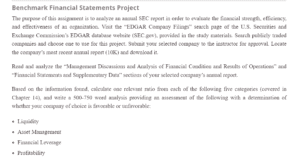Financial Statements
Liquidity
The current ratio is a metric that determines a company’s effectiveness in servicing its short-term obligations with its existing assets. Apple’s current assets were recorded at 1.54 in 2019, indicating that the firm has one and a half times the investments required to repay its debt. Notably, the lowest current ratio recorded over the past five years was 1.08, signifying the firm’s financial stability (Stock Analysis on Net., n.p). The quick percentage signifies a company’s ability to repay its short-term liabilities from its cash assets. This metric demonstrated the company’s solvency, which is crucial in financing its activities. The quick ratio recorded in 2019 was 1.38, indicating Apple has one-third of the required cash assets in servicing its current liabilities. There was a significant increase in quick ratio from 2018, where it was recorded at 0,.99 to 2019, where it was registered at 1.38. Notably, the lowest rapid rate recorded over the past five years was 0.89, illustrating its liquidity.
Asset Management
The receivable Turnover Ratio is a metric that evaluates a company’s efficiency in collecting revenue and managing assets. Apple’s receivable turnover was recorded at 14.64 in 2019, which was a decrease from 2018; it was registered at 15.02. Inventory turnover signifies the company’s effectiveness in managing inventory by comparing the cost of goods sold with the average list. It indicates the period it takes a company to convert to sales. Apple’s inventory turnover was recorded at 65.12 (Macrotrend, n.p). A fixed asset turnover illustrates the company’s effectiveness in earning revenue from its fixed assets, such as PPE (property, plant, and equipment). Apple’s fixed asset turnover was recorded at 0.27 in 2019. Total assets turnover indicates a company’s effectiveness in generating sales revenue from its total assets. Apple’s total turnover ratio was recorded at 1.086
Financial Leverage
Return on equity signifies the company’s efficiency in converting shareholders’ wealth into profit. Apple’s ROE was registered at 61.06, which was a remarkable increase from the previous year’s 55.6 (Finkle and Mallin, 2010). As a result, apple’s equity is attractive to shareholders, given the company puts shareholders’ wealth to good use.
Profitability
Gross Profit Margin is a profitability margin that measures the remaining revenue obtained from sales after paying the goods’ cost. Apple’s gross margin was recorded at 37.817, which increased from the previous year to 38.3. Over the past five years, the highest gross margin attained was 40, and the lowest was 38. Therefore, the cost of goods sold comprises 60% of the total revenue earned over a period. Operating Profit Margin refers to the percentage of profit obtained before deducting tax and interest expense. Apple’s operating margin was recorded at 24.572 in 2019, registering a decrease from the previous year (26.94) (Finkle and Mallin, 2010). Net profit margin refers to the number of sales earned after deducting expenses, interest, and tax. The net profit margin was recorded at 21.2, which decreased from 22.41 in the previous year. Notably, the highest profit margin earned over the five years is 22, and the lowest is 21.
Market Value
Stock market beta is a measure of risk that indicates the various portfolios’ volatility. When the beta is one, then it shows it is neutral in the market. In the current financial year, the beta for Apple Inc. stands at 1.27. In 2020, 2019, 2018, and 2017, the beta value for Apple Inc. was 1.29, 1.234, 1.209, and 1.299. The figure has decreased from the previous year. However, the importance of beta has been more than one in the past five years. That indicates that stock value is anticipated to increase by more than the up calls market and a decrease in the down market (Berry, Betterton & Karagiannidis, 2014). The standard value for beta is 1.0. The figure’s ranking is based on how they deviate from the market’s typical price. Since the beta model is higher than the expected value of 1.0, Apple Inc.’s risk is much lower.
Assessment: The selected company (Apple Inc.) is favorable from the above assessment.
References
Berry, S., Betterton, C., & Karagiannidis, L. (2014). Understanding Weighted Average Cost of Capital: A Pedogeological Application. Journal of Financial Education, 11-32.
Finkle, T. A., & Mallin, M. L. (2010). Steve Jobs and Apple, Inc. Journal of the International Academy for Case Studies, 16(7), 31.
Macrotrend. (n.d). Apple Financial Ratios for Analysis 2005-2020 | AAPL. Retrieved from https://www.macrotrends.net/stocks/charts/AAPL/apple/financial-ratios
Stock Analysis on Net. Apple Inc. (NASDAQ:AAPL). Retrieved from https://www.stock-analysis-on.net/NASDAQ/Company/Apple-Inc/Ratios/Profitability/Quarterly-Data.
ORDER A PLAGIARISM-FREE PAPER HERE
We’ll write everything from scratch
Question 
Benchmark Financial Statements Project
The purpose of this assignment is to analyze an annual SEC report in order to evaluate the financial strength, efficiency, and effectiveness of an organization. Visit the “EDGAR Company Filings” search page of the U.S. Securities and Exchange Commission’s EDGAR database website (SEC.gov), provided in the study materials. Search publicly traded companies and choose one to use for this project. Submit your selected company to the instructor for approval. Locate the company’s most recent annual report (10K) and download it.

Financial Statements
Read and analyze the “Management Discussions and Analysis of Financial Condition and Results of Operations” and “Financial Statements and Supplementary Data” sections of your selected company’s annual report.
Based on the information found, calculate one relevant ratio from each of the following five categories (covered in Chapter 14), and write a 500-750 word analysis providing an assessment of the following with a determination of whether your company of choice is favorable or unfavorable:
- Liquidity
- Asset Management
- Financial Leverage
- Profitability
- Market Value
Conclude with an evaluation of the overall financial strength, efficiency, and effectiveness of the organization based on your findings.